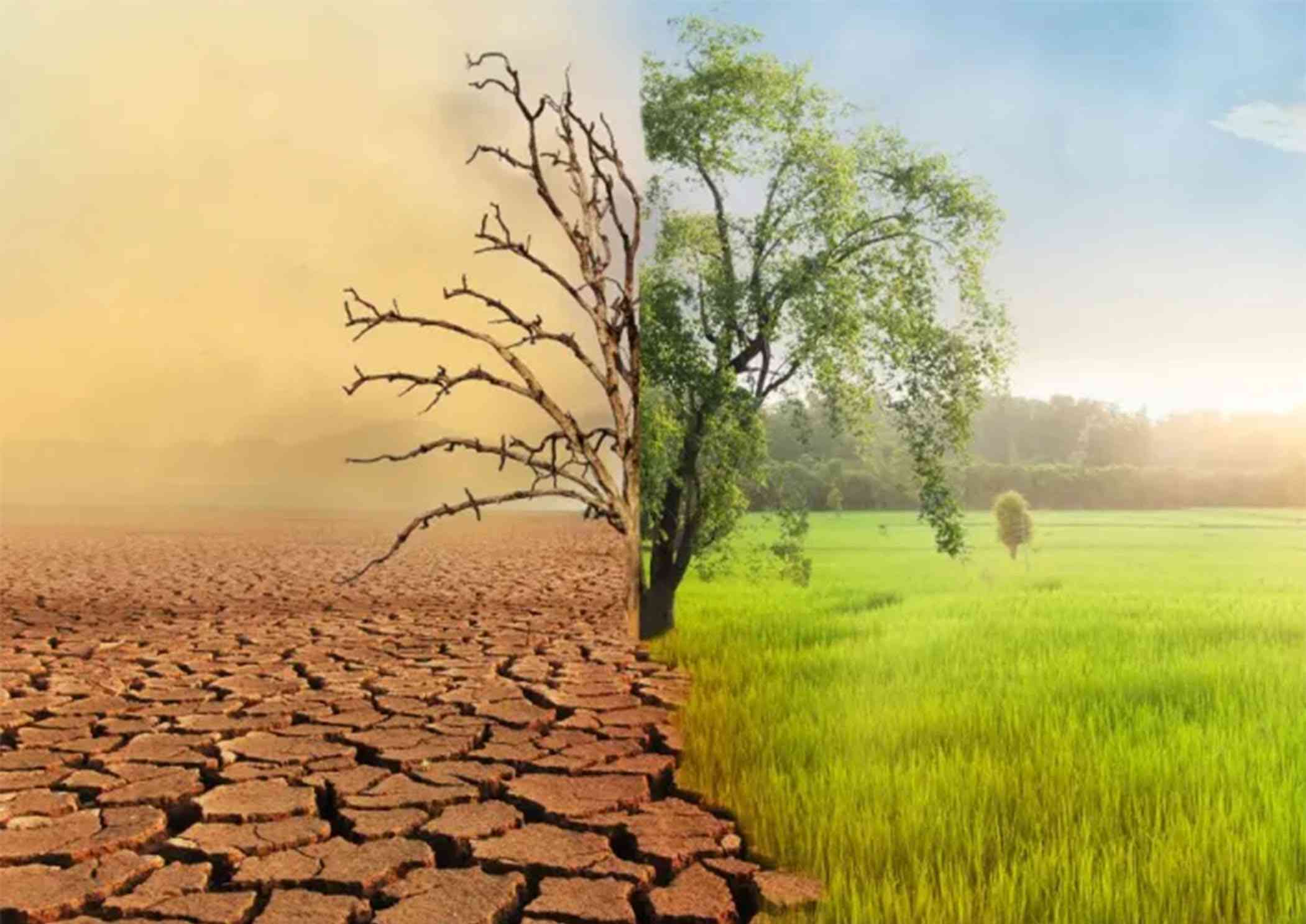
CLIMATE change has been a topic reserved for experts for too long, leaving ordinary citizens feeling disconnected from the conversation. The Climate Brief intends to share and discuss climate change issues in a language you and I can relate to and understand.
As we gradually recognise the importance of understanding climate change for everyone, it is crucial to discuss its direct impact on our daily lives.
Today, we face the stark reality of climate change in our daily lives. We have observed drastic shifts in weather patterns, including changes in rainfall patterns and seasons, rising temperatures, reduced rainfall, and more frequent natural disasters such as cyclones.
Close to home and fresh in our minds, we have witnessed the devastating impacts of cyclones in Manicaland and other parts of the country, resulting in loss of life, damage to infrastructure, harm to animals, and a total disruption to people’s livelihoods.
The reality of climate change requires us to clearly define and discuss why our climate is changing in the first place. That is the only way we can alter our behaviour regarding the factors contributing to climate change.
From the outset, it is essential to establish that the contributing factors of climate change are diverse and encompass various human activities and natural processes. In simple terms, we, as humans, are the primary reason for the changing climate.
When human involvement arises, it often prompts inquiries about how and who should bear greater responsibility. We tend to quickly attribute blame to others and point fingers without first assuming responsibility ourselves.
This dynamic is particularly pertinent in discussions about climate change, although it could be a topic for another time.
- COP26 a washout? Don’t lose hope – here’s why
- Out & about: Bright sheds light on Vic Falls Carnival
- COP26 a washout? Don’t lose hope – here’s why
- Out & about: Bright sheds light on Vic Falls Carnival
Keep Reading
However, this article will only explore the human activities that contribute to our current situation.
Human-induced climate change factors include greenhouse gas release from industrial processes, transportation, agriculture, and deforestation.
Greenhouse gases are gases in the atmosphere that trap heat. They include carbon dioxide, methane, and nitrous oxide, among others.
The emission of these greenhouse gasesfrom human activities like burning fossil fuels, industrial processes, deforestation, and agricultural practices contributes to the greenhouse effect.
This effect involves trapping heat in the atmosphere, leading to a gradual rise in global temperatures.
As a result, the Earth's climate undergoes significant changes, including changes in rainfall patterns, more frequent extreme weather events, melting polar ice caps, and rising sea levels.
The long-term impact of these changes poses threats to ecosystems, water resources, agriculture, and human health.
With our reliance on cars powered by petrol and diesel, we contribute to releasing carbon dioxide emissions, which are harmful greenhouse gases that escape into the atmosphere.
As the number of cars on the road continues to grow, the volume of these unwanted carbon dioxide emissions also increases, further aggravating the environmental impact.
Industries play a vital role in today's economy, but unfortunately, they are also the primary contributors to greenhouse gas emissions.
As countries ramp up production in these industries, their carbon footprint expands, leading to more significant damage to the atmosphere.
The rearing of animals, particularly cattle, has been widely recognised as a significant contributor to greenhouse gas emissions. This is primarily due to the methane produced during cattle digestion.
Methane is a potent greenhouse gas, and its large-scale production by cattle rearing has a considerable impact on global warming and climate change.
Nitrous oxide, also known as laughing gas, is produced by agricultural activities such as using synthetic fertilisers, managing manure, and burning agricultural residues.
It is also emitted from industrial sources, such as the combustion of fossil fuels and specific industrial processes.
It is also essential to explain how land-use changes, such as urbanisation and agricultural expansion, alter local and regional climate patterns.
This understanding helps us see how our “modern” ways of living significantly impact climate change.
Urbanisation, the process of population concentration into urban areas, has been on the rise, and it has several implications for climate change.
The expansion of urban areas often replaces natural landscapes (including wetlands and water aquifers) with impervious surfaces such as concrete and asphalt. This alteration disrupts the natural water cycle, leading to increased surface runoff and reduced infiltration, which can contribute to changes in local and regional rainfall patterns.
Furthermore, urban areas often experience the "urban heat island" effect, where the concentration of human activities and infrastructure leads to higher temperatures than surrounding rural areas.
This effect is primarily due to the absorption and retention of heat by buildings and paved surfaces andheat release from human activities and energy use.
As a result, urban heat islands can lead to higher energy consumption for cooling, increased air pollution, and adverse health effects for urban residents.
Agricultural expansion, on the other hand, directly impacts climate change through changes in land cover and land use. Clearing forests and natural vegetation for agricultural purposes reduces the land's carbon absorption capacity and releases stored carbon into the atmosphere.
Deforestation, often associated with agricultural expansion, contributes to increased atmospheric carbon dioxide levels, a significant greenhouse gas contributing to global warming.
Trees play a vital role in the Earth's ecosystem by acting as carbon sinks. Trees absorb carbon dioxide from the atmosphere through photosynthesis, utilising the carbon for growth and releasing oxygen as a by-product.
This process helps to regulate the concentration of carbon dioxide in the atmosphere, mitigating the effects of climate change.
Moreover, agricultural practices, such as tilling and excessive fertiliser use, can release other potent greenhouse gases, such as nitrous oxide. These activities also impact the water cycle, as changes in land cover and irrigation practices can influence local and regional rainfall patterns and evapotranspiration rates.
In addition, the expansion of agricultural land can lead to changes in albedo, the measure of how much sunlight is reflected by a surface. Replacement of natural landscapes with croplands can alter the reflective properties of the land, affecting the energy balance and heat absorption of the earth's surface.
Urbanisation and agricultural expansion significantly alter land cover, surface properties, and energy fluxes, influencing local and regional climate patterns.
These changes have implications for temperature, rainfall, water availability, and ecosystem dynamics, all of which contribute to the broader impacts of climate change.
Natural phenomena, such as volcanic eruptions, solar radiation variability, and natural climate cycles, can also influence climate change.
These factors interact in complex ways, leading to alterations in temperature, rainfall patterns, and other aspects of the Earth's climate system.
Volcanic eruptions release large amounts of ash, sulfur dioxide, and other particles into the atmosphere. These particles can reflect sunlight away from the Earth cooling the climate.
Additionally, volcanic eruptions can release greenhouse gases, such as carbon dioxide, contributing to global warming.
Solar radiation variability, including changes in sun energy output, can also affect climate patterns. Variations in solar radiation can lead to fluctuations in temperature and weather patterns, influencing the Earth's climate system.
Natural climate cycles, such as El Niño and La Niña, can cause shifts in ocean temperatures and weather patterns, leading to global climate impacts. These cycles can change rainfall, temperature, and storm patterns, affecting ecosystems and human societies.
When studying climate change, it is essential to understand and consider the influence of these natural phenomena. Acknowledging their impact can help us better comprehend the complexities of climate dynamics and make informed decisions to address and adapt to the changing climate.
Understanding why our climate is changing is crucial for all of us. Human activities such as industrial processes, transportation, agriculture, deforestation, and urbanisation have significantly contributed to the release of greenhouse gases and alterations in land use, ultimately leading to climate change.
Recognising our role in climate change is the first step towards taking responsibility and making necessary changes to mitigate its impact.
Individuals, industries, and governments must work together to adopt sustainable practices, reduce greenhouse gas emissions, and promote environmental conservation to address the challenges posed by climate change and ensure a sustainable future for our planet.
- Muyambwa is a development practitioner and researcher with expertise and research interests in democracy, natural resource governance, climate change and youth participation. He has extensive experience working on climate change, economic governance and youth participation using gender-sensitive, gender-responsive and gender-transformative approaches. — [email protected]











